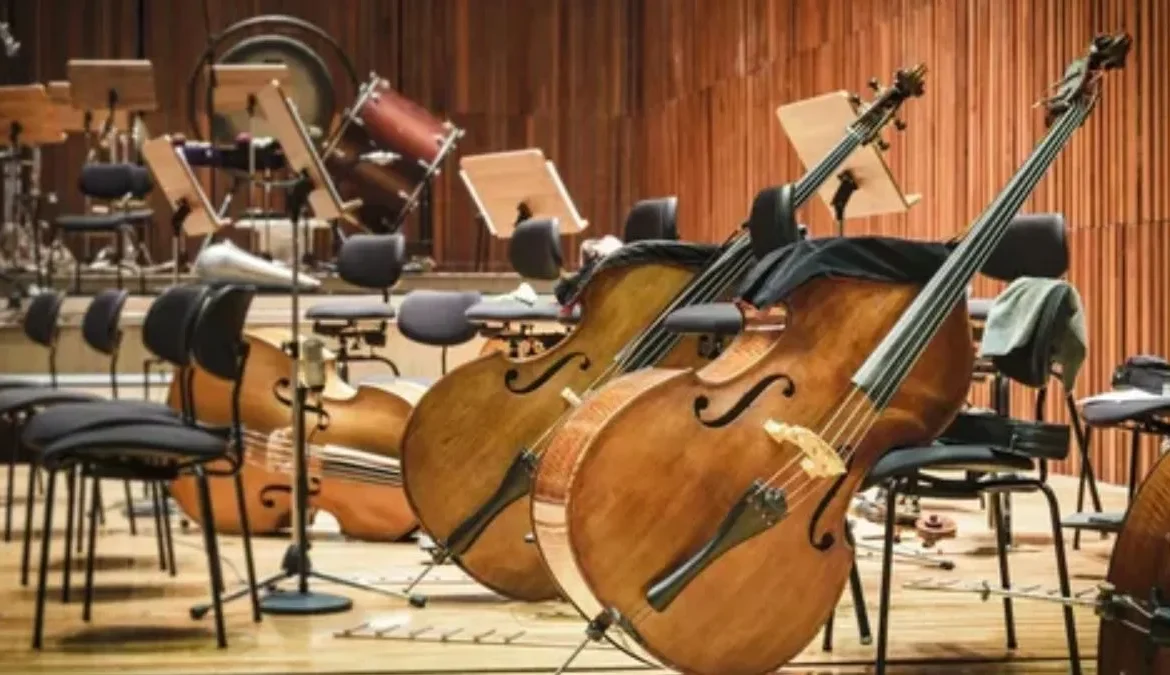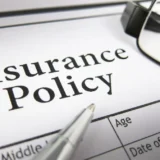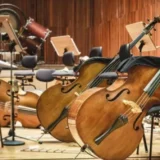Musical instruments can be expensive investments that are vulnerable to damage, theft, and other losses.
However, many musicians don’t realize that musical instrument insurance exists to protect their valuable gear.
As both a musician and someone who has experienced an unfortunate instrument-related incident, I’m here to explain why you need musical instrument insurance and what it can cover.
Contents
- 1 What Types of Coverage Are Available?
- 2 Why You Need Musical Instrument Insurance
- 3 How to Find the Right Policy for Your Needs
- 4 Wrapping Up Musical Instrument Insurance Basics
- 5 Which Instruments Require Musical Instrument Insurance?
- 6 What Should You Consider When Choosing a Musical Instrument Insurance Policy?
- 7 Filing a Claim with Your Musical Instrument Insurance
- 8 Frequently Asked Questions About Musical Instrument Insurance
- 8.1 Question: Do I need musical instrument insurance if I’m an amateur musician?
- 8.2 Question: Is my home or renters insurance enough for my musical instruments?
- 8.3 Question: Will musical instruments insurance cover electronics like audio interfaces or headphones?
- 8.4 Question: Will musical instrument insurance cover multiple musician families?
- 8.5 Question: What is the claims process for making a repair or theft claim with musical instrument insurance?
- 8.6 Question: Is there a musical instrument insurance waiting period for new purchases?
- 8.7 Question: Can I insure just one or two valuable instruments instead of a full collection?
- 8.8 Question: What should I do if an insured instrument is damaged but repairable?
- 8.9 Question: How often do I need to reappraise instruments for adequate musical instrument insurance coverage?
- 8.10 Question: Can I extend musical instrument insurance overseas for touring musicians?
What Types of Coverage Are Available?
There are a few main types of coverage offered through musical instrument insurance policies:
Theft Coverage
Theft is a major concern for musicians, as instruments are often targets for thieves. Musical instrument insurance can reimburse you if your gear is stolen.
Coverage typically extends to instances of theft from vehicles, homes, practice spaces, and more. Additionally, some policies may cover theft from unattended vehicles up to a certain value.
Accidental Damage Coverage
Accidents happen – instruments can be damaged if they’re dropped, liquids are spilled on them, cases are broken, etc.
With accidental damage coverage, repair or replacement costs are covered if your instrument is harmed unintentionally. This gives peace of mind when practicing or performing.
Loss or Damage in Transit Coverage
For musicians who travel frequently with their gear, coverage for loss or damage that occurs while instruments are being transported is essential.
This may cover checked or carried-on baggage during flights, as well as ground shipping within certain limits.
Liability Coverage
Liability coverage helps protect against costs that may arise if someone is accidentally injured by your equipment at a performance or practice space. It can reimburse medical bills and legal defense fees in such situations.
Why You Need Musical Instrument Insurance
As you can see, musical instrument insurance provides comprehensive protection against a variety of unfortunate circumstances that could be financially devastating without it.
Beyond the coverage benefits, there are several compelling reasons why all musicians should have this type of insurance:
Instruments Are a Significant Financial Investment
Quality instruments, especially at a professional level, can cost thousands or even tens of thousands of dollars.
If something bad happens like theft or damage, the out-of-pocket replacement costs would be extremely difficult for most people to shoulder alone. Insurance eases this burden.
Accidents and Losses Are More Common Than You Think
While care is taken, musical gear faces risks every time it leaves the home. Small accidents do frequently occur during regular use too.
As someone who once left an instrument on top of their car only to watch helplessly as it fell off on the highway, I can personally attest losses are easier than anticipated. Insurance protects against life’s unexpectancies.
It Provides Peace of Mind for Performing and Traveling
Loading in and out of venues, and traveling long distances by vehicle or plane – musical instrument insurance gives confidence to fully focus on the performance knowing your expensive equipment has coverage for potential issues beyond your control. Especially for working musicians, that security has real value.
Renters or Homeowners Insurance May Not Fully Cover Instruments
Most basic property insurance policies have relatively low maximum payouts for musical gear or imposed per-item limits.
Without a specialist policy, all but your most inexpensive instruments may have inadequate or no loss coverage. It’s better not to assume and get the right protection.
Premiums Are Surprisingly Affordable
Considering the cost of replacing high-end musical gear, insurance premiums – which can be as low as $150 annually – are quite reasonable relative to the protection provided.
For a small monthly or annual fee, musicians gain major financial security and risk mitigation. The modest investment is wise for most.
How to Find the Right Policy for Your Needs
With the importance of instrument coverage established, here are some tips for obtaining an effective musical instrument insurance plan:
Shop Around and Compare Multiple Quotes
Like other types of insurance, premium costs can vary between providers for comparable coverage amounts and deductibles.
Get quotes from the major instrument insurers plus any local specialists to find the best price. Allow extra time for this research process.
Provide Complete and Accurate Equipment Lists
List every piece of owned gear with purchase prices, serial numbers, and photos if possible. Insurers need thorough documentation to establish covered property and payout amounts.
Underreporting valuable items could lead to headaches in making a future claim.
Choose Proper Coverage Levels and Deductibles
Decide what coverage types you truly need based on usage and transportation habits. Opt for high replacement value amounts, but balance this against affordability.
And evaluate deductible levels by weighing potential claim amounts versus premium savings.
Consider Add-Ons Like Rider Policies for New Purchases
Some insurers let you add new gear via riders for 30 days without having to change your main policy.
This is handy for insuring new acquisitions quickly during the ownership period before the next annual renewal.
Keep Proof of Ownership Documents Handy
Be prepared to provide purchase receipts, photos, or instrument appraisals if making a claim.
Having records organized ahead of time streamlines the process when time matters most. Ask your insurer for specifics regarding the required documentation.
Wrapping Up Musical Instrument Insurance Basics
In summary, musical instruments represent major financial assets, even if just a treasured hobby.
Given their constant exposure to risks from accidents, theft, and transportation/travel incidents, specialist insurance protection offers musicians smart risk mitigation and peace of mind.
With some research among insurance specialists, an affordable yet comprehensive policy can usually be found to fully safeguard valuable gear and prevent devastating replacement costs.
Don’t leave your livelihood or passions vulnerable – smart musicians insure their instruments.
Which Instruments Require Musical Instrument Insurance?
Expensive Acoustic and Electric Instruments
Instruments like acoustic and electric guitars, basses, cellos, violins, and other bowed strings that have significant monetary value are worth protecting with musical instrument insurance. Replacing these kinds of instruments could cost thousands without coverage to assist.
Valuable Vintage Instruments
Rare vintage instruments that are decades old like vintage keyboards, tube amplifiers, original print trombones, and other brass, or vintage acoustic guitars likely hold immense monetary and sentimental value.
Ensuring these irreplaceable instruments have musical instrument insurance is highly recommended.
Professional-Level Percussion
A full professional percussion set complete with drums, cymbals, hardware, and accessories can easily eclipse $10,000 in value before taxes. Having adequate musical instrument insurance for percussion at this level is essential.
What Should You Consider When Choosing a Musical Instrument Insurance Policy?
Deductible Levels
Weigh deductible amounts, often $50-$500, against potential claim payouts and monthly premium costs when selecting the right musical instrument insurance policy for your needs. A higher deductible may lead to lower rates.
Policy Limits
Assess maximum coverage payout totals offered by different musical instrument insurance plans to confirm your most expensive gear will be fully insured for replacement in case of a loss claim.
Add-On Options
Some musical instrument insurance policies allow add-ons like rental reimbursement coverage that could prove valuable if replacements are needed while repairs are undertaken.
Filing a Claim with Your Musical Instrument Insurance
Gather Documentation
Have purchase receipts, appraisals, photographs, and other proof of ownership material together ahead of time when filing a musical instrument insurance claim.
Notify Insurer Promptly
Contact your musical instrument insurance provider as soon as possible after an incident to report any damages, thefts, or other losses covered by the policy.
Work with Adjustors
Cooperate fully with the insurance company’s adjustors by providing the information requested to expedite the claims process for reimbursement under the terms of your musical instrument insurance plan.
Frequently Asked Questions About Musical Instrument Insurance
Question: Do I need musical instrument insurance if I’m an amateur musician?
Answer: While professional musicians certainly benefit, even hobbyists or student musicians may want coverage if they have high-end or collectible instruments. Musical instrument insurance is affordable protection for any passionate player.
Question: Is my home or renters insurance enough for my musical instruments?
Answer: General property policies may only cover instruments partially or have low maximum limits. Musical instrument insurance is designed to fully insure gear at fair market value.
Question: Will musical instruments insurance cover electronics like audio interfaces or headphones?
Answer: Most policies can cover electronics that are used for playing or amplifying instruments. Carefully review your potential policy’s covered electronic items when selecting musical instrument insurance.
Question: Will musical instrument insurance cover multiple musician families?
Answer: Yes, many insurers offer policies structured for families and households with coverage tailored for individual members and their unique instruments under one master policy.
Question: What is the claims process for making a repair or theft claim with musical instrument insurance?
Answer: Having key documentation ready helps expedite processing. File your claim promptly, cooperate fully with adjustors, and follow guidance on submitting estimates and arranging reimbursement under policy terms.
Question: Is there a musical instrument insurance waiting period for new purchases?
Answer: Some policies have 30-day waiting periods before coverage kicks in for newly acquired instruments.
Rider policies can provide faster protection during ownership transitions between main renewals.
Question: Can I insure just one or two valuable instruments instead of a full collection?
Answer: Yes, many insurers allow itemized coverage tailored to your individual needs, whether it’s a full collection or targeting insurance for one or two most expensive instruments.
Question: What should I do if an insured instrument is damaged but repairable?
Answer: File a claim, document the repairs needed with estimates, and work with your insurer who may reimburse costs or arrange for repairs covered under the terms of your musical instrument insurance policy.
Question: How often do I need to reappraise instruments for adequate musical instrument insurance coverage?
Answer: Every 2-3 years is generally recommended to confirm fair market values and coverage amounts stay consistent for rapidly appreciating collector’s items or professionally leveled gear. Annual inflation factors may also apply.
Question: Can I extend musical instrument insurance overseas for touring musicians?
Answer: Some insurers provide coverage extensions for international touring, but check policy details. Comprehensive plans for traveling professionals best address specific global needs.






